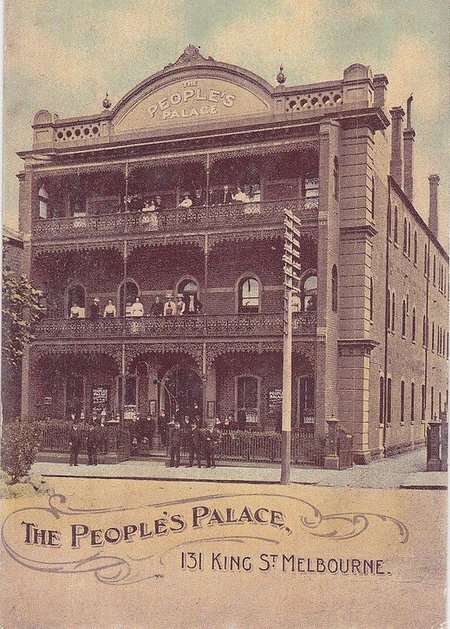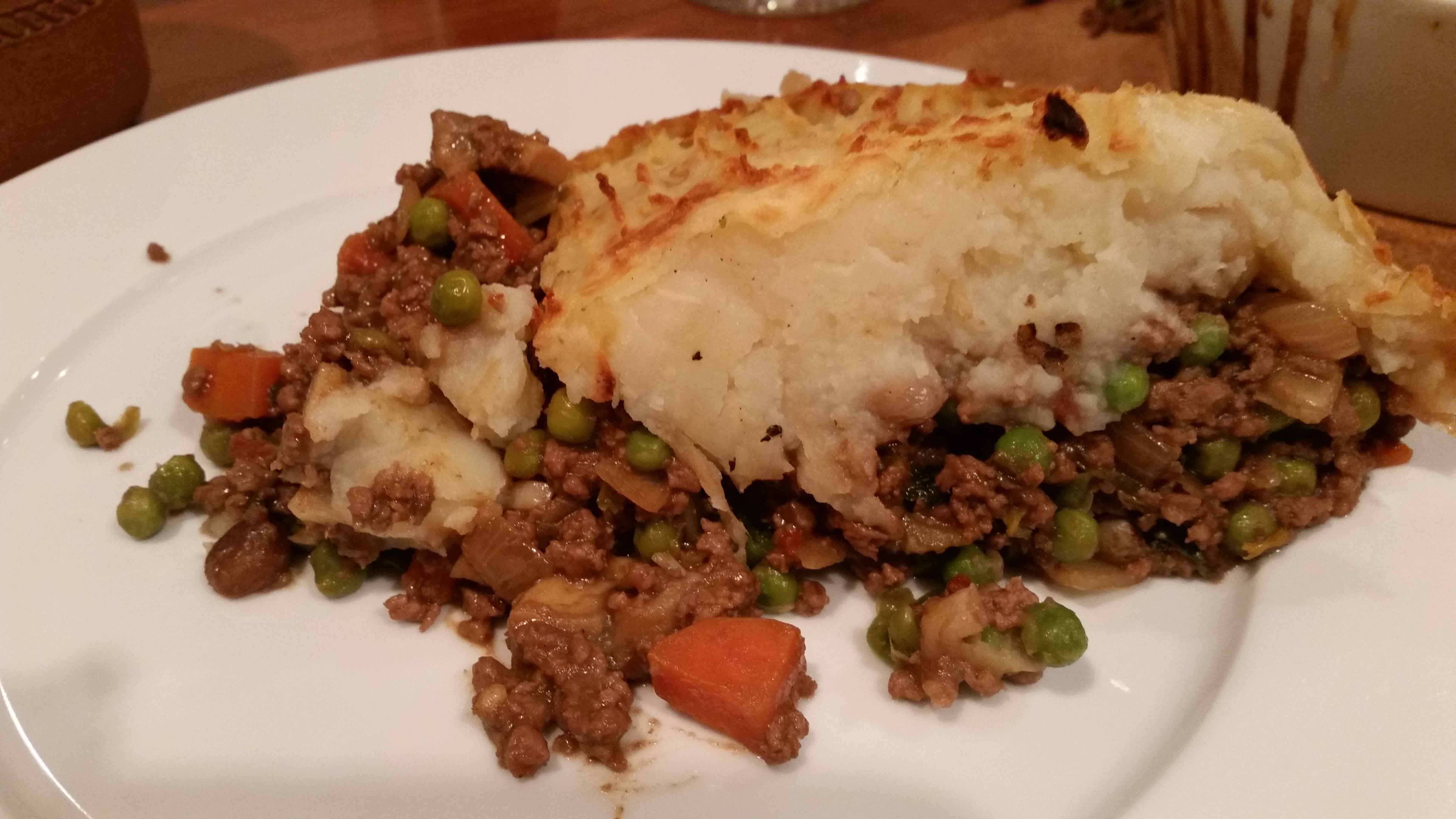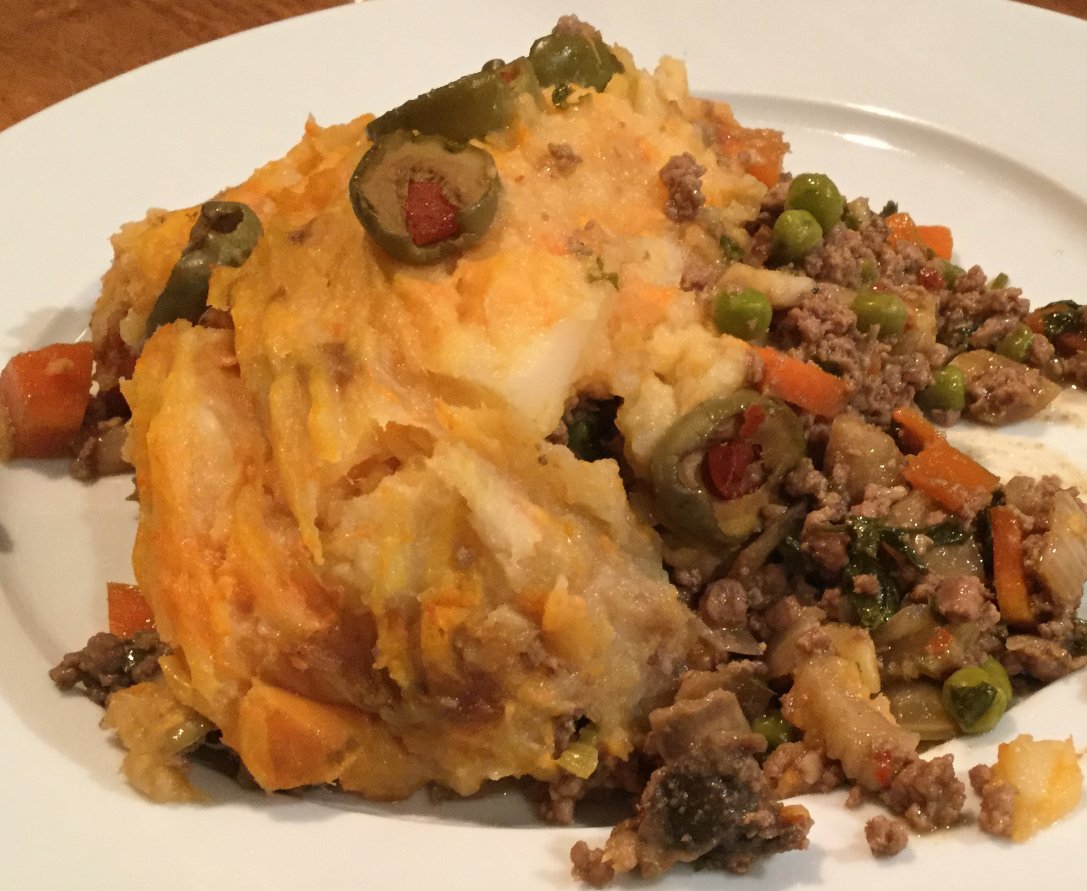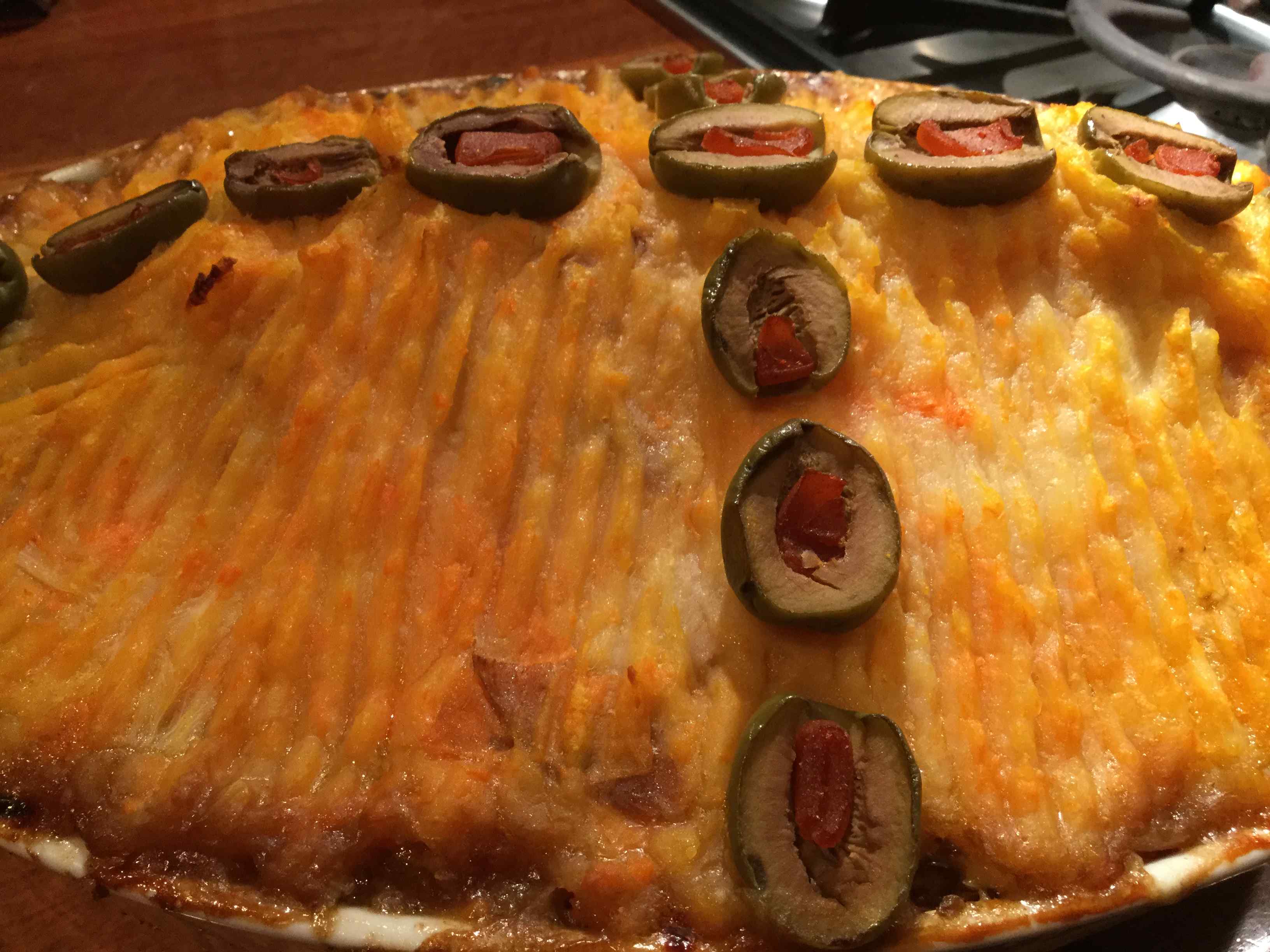Shepherd’s Pie – The history
Our friend Alistair obtained this recipe in 1973 when he and Alessina stayed at the Salvation Army’s People’s Palace, Melbourne. He was told it was based on the Salvation Army’s 1914 traditional Australian winter recipe.
The two had arrived in Australia by ship from Canada and the “Palace” had been recommended to them by a fellow passenger as the place to stay in Melbourne. With his UK background, he was pleasantly surprised to find an old favourite – a blast from the past – on the menu!
In 1901 the Salvation Army built the Workmen’s Metropolis at 131 King Street. It was renamed the People’s Palace around 1914 and “its focus was changed from long to short term accommodation”. Here is an early photo. (Source).
“At the end of 1924, the Workmen’s Metropolis was demolished and a new seven storey People’s Palace was erected on the site. The palace could hold 500 persons, it had a trafficable flat roof to overview the populace, a palm court, and several `spacious lounges’ including the large dining saloon on the ground floor. This saloon could seat 200, with its lead light dome, panelled walls, hexagonal tables, and imitation marble columns.” (For history see: History, p. 95. )
The building was completed in 1926 and opened to much fanfare. (For more history see: More history).
In 1973, the building still retained many aspects of the original. Indeed it was a very suitable ‘first home’ for the couple as they set out to establish a life in Melbourne.
During their stay Alistair managed to obtain the Salvo’s 1914 version of shepherd’s pie, and he did so by transcribing it long hand: photocopiers were rare in those days, and digital photography was some decades away.
Shepherd’s Pie – The 1914 recipe
The 1914 recipe makes plenty, providing extra-large serves for four people or medium serves for six to eight. It was probably designed to feed hordes and to be made on an ‘industrial scale’: remember that the dining saloon built in 1924 could seat 200, and that in those days food from the ‘old country’ – roasts, stews and pies – would have dominated, with pizzas and pasta to become popular in the 1960s and Vietnamese food to arrive in the 1970s.
This is a hearty winter’s dish. Reduce the volume accordingly for smaller versions. Serve with freshly steamed green vegetables or with a green salad. The recipe that follows includes some ‘tweaking’ by Alistair and some streamlining by us. The original recipe called for lamb that was “twice minced”, but modern store bought mince is fine.
You can make the pie in stages. The mince mixture is best prepared ahead of time and set aside, even refrigerated overnight, as the longer period enhances the flavours. However, Alistair says that, in his experience, mash that is allowed to chill or even go cold does not work nearly as well as mash that has been freshly prepared. When you assemble the dish, you might want to reheat each component so that it does not have to stay in the oven too long to warm through. You can assemble the pie well ahead of time but allow for longer cooking on a slightly lower temperature.
You can use a traditional crust of just potatoes.
Or jazz it up with other ingredients, as given below.
Alistair invited us over for a Shepherd’s Pie night. All the preparations had been done: the photos in this blog post were taken at different stages from when he began to assemble the dish.
Ingredients
For the lamb:
- 1 kilo of lamb mince
- 2 tbsps Worcestershire Sauce
- 2 tbsps Gravox mix (or two beef stock cubes)
- 1 large brown onion, chopped
- 1 celery heart (middle and inner stems, minus leaves), small dice
- 4 medium-sized carrots, small dice
- 6 medium mushrooms, small dice
- 2 large cloves of garlic, finely chopped
- 1 medium apple, diced
- 1/2 to 1 handful of sultanas (optional)
- dried chilli flakes
- salt and pepper
- small bunch fresh coriander, finely chopped (optional)
- 150 g green peas frozen or fresh
For the crust:
- 4 – 5 large Kestrel or other white potatoes, peeled or unpeeled, quartered
- 1 large parsnip, peeled or unpeeled, roughly chopped
- ½ sweet potato (optional), peeled or unpeeled, roughly chopped
- 1 – 2 tbsps butter
- salt and pepper
- 4 – 8 large stuffed green olives
Instructions:
Lamb mix:
Choose a good-sized cooking pot with a lid.
Add the lamb without oil or butter and cook over low heat. Allow the meat juices to be released but not dry out.
Strain the mince and retain the juices. Add the Worcestershire Sauce to the juice. Gradually stir in Gravox or stock cubes so as to achieve a smooth gravy.
Return the mince to the saucepan. Over medium-low heat, add the onion and cook slowly for several minutes until the onions change colour and soften somewhat. In turn, add the carrots, celery and mushrooms, allowing each to cook through a little. Add the garlic, then the apple and sultanas (if using).
Cover and simmer for 5 to 10 minutes. Whisk gravy and slowly stir it through the mince mixture to coat everything, giving a ‘well oiled’ appearance. Add the chilli then salt and pepper to taste.
For a modern twist, add the finely chopped coriander (well washed and dried). Finally, add the peas (frozen peas can be added directly) Stir through and reheat. Cover and set aside until required. Refrigerating the lamb mixture overnight adds to the flavours.
Pie crust:
Leave the skin on the potatoes and parsnip, but not the sweet potato. Cut them into suitable chunks for boiling.
Boil the potatoes and parsnip together in a large saucepan, and if using, add the sweet potato at a suitable stage. Cook until softened. Drain and mash using a little butter (but no milk). You want a mash that is smooth throughout; season with salt and pepper as desired.
Cover and set aside until required: preferably keep warm.
Assembly and cooking:
Preheat the oven to 180oC (fan-forced).
Reheat the lamb mixture and the mash separately, so they are at least warm at assembly time.
Tip the lamb mixture into a suitable baking dish, allowing room for the mash to go on later; you need a centimetre or two of space below the rim. Pat the mince mixture down firmly.
Add the mash and smooth all over the lamb, but build up the pie in the middle to give a peak or a ridge along the middle. Decorate or shape the pie to give a ‘gabled, corrugated roof’ effect. Do this by using a fork to pull up some of the mash from the edges to form a peak or crest.
Slice the olives in half, including their red pepper stuffing and decorate the top.
Place in the oven for 30 to 35 minutes. Check after 25 minutes. The pie is ready when the juices start to bubble up around the edges and the mash crust begins to brown along the corrugations. If necessary, take a sample from the middle of the pie to check that it has heated all the way through.
Equipment: Two saucepans, baking dish.
Difficulty: 3/5, Moderately Difficult. 30 to 40 minutes preparation, plus an hour or so cooking in different stages.
Serve: Serve piping hot, with a green vegetable, such as beans or Brussels sprouts and/or a green salad. Four extra-large main course serves or six to eight medium serves.
Contributions welcomed!
If you have an old, forgotten favourite, please be in touch, especially if you can provide your recipe and some history. (Not essential, but provide good quality photos if you have any.)









